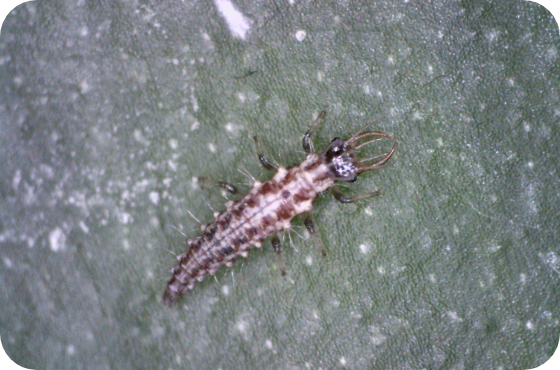Quality Products
Fast Delivery
Premium Service
Written by Kees Kouwenhoven | Last update: 13. June 2021
Chrysoperla carnea is an effective natural enemy of aphids, particularly in its larval stage. The larvae of Chrysoperla carnea use their powerful jaws to puncture aphids and inject a paralyzing fluid. This fluid causes the aphid to become liquefied, allowing the larvae to feed on the aphid’s contents. After feeding, only the desiccated bodies of the aphids remain. For optimal organic aphid control in greenhouse environments, consider introducing Chrysoperla carnea.

Chrysoperla carnea larvae, measuring 2 to 10 mm, are characterized by their grey-brown bodies and prominent jaws. As these larvae can't fly, they should be released near aphid infestations to ensure effective greenhouse aphid control. As they mature, Chrysoperla carnea adults become distinguishable by their slender, green bodies, which are about 12 mm long, and their large, intricately veined wings. For optimal activity, Chrysoperla carnea thrives in temperatures ranging from 12 to 25°C.